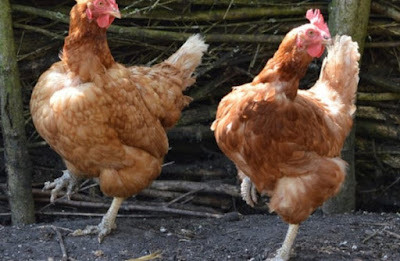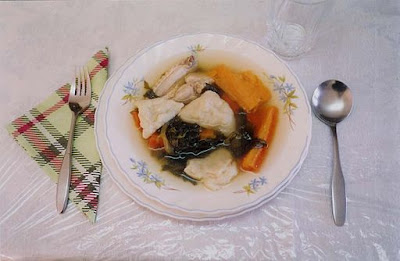The Saga Continues: And yet, the subject of chickens is not exhausted. Continuing last week's tasteful poultry pulke theme, Abq Jew proudly (well, shamelessly) provides even more chicken stories. And chicken music.
1. Under the Chicken Tree
Let's begin with Maria Muldaur's 2010 Music for Little People album, Barnyard Dance - Jug Band Music for Kids.
First of all - as the founding member and chief banjo player and vocalist for the Motherhood and Apple Pie Skiffle Band (we were big in the Santa Clara Valley in 1968), Abq Jew loudly and vociferously approves the use of jug band music for virtually any age group.
And then - as Jeff Tamarkin explains in his AllMusic Review -
Jug band music is, by its very nature, a "happy, snappy, lighthearted, humorous, goofy, wacky, high-spirited" sound, which certainly would appeal to any child.
Why this now-marginalized genre - born in the '20s and popularized in the '60s via acts such as the Jim Kweskin Jug Band and the Even Dozen Jug Band (of which Muldaur was a member) - was never marketed with kids in mind is a good question, but Muldaur hits the perfect note with this collection.
As for the song Under the Chicken Tree (words by Irving Jones; music by Kerry Mills; ©1908; as recorded by Earl McDonald Louisville Jug Band, Columbia 14206D, 3/30/27) - Abq Jew learned it a few years ago from Albuquerque's own
Banjo Judy Muldawer. Who performs Tin Pan Alley and jug band music and all sorts of stuff with her husband of 55 years, Michael. Mazeltov! PLUG: The Muldawers are the recipients of the 2015 Southwest Pickers Entertainment Duo Award. They perform for private parties, as well as public venues.
Anyway - here is Maria Muldaur's version.
2. There Are Chickens in the Trees
So hey - we're talking about kids and chickens in trees. So Abq Jew felt he should throw in this Sesame Street favorite.
The book “G” is for Growing: Thirty Years of Research on Children and Sesame Street cites a producer of Sesame Street who refers to Big Bird as a canary.
In an episode of Sesame Street, Big Bird was asked if he was related to the cassowary; he replied, "I'm more of a condor."
On the January 23, 1976 episode of Hollywood Squares, Big Bird was asked what kind of bird he is and said he was a lark, causing host Peter Marshall to crack up.
In the film Don't Eat the Pictures, Osiris calls Big Bird an ibis. Big Bird appeared in a series 11 episode of Mister Rogers' Neighborhood, in which he declares he is a "golden condor".
Zoologist Mike Dickison suggested in his popular Pechakucha talk that Big Bird represents a unique species that evolved from the whooping crane.
Big Bird is always described as being flightless. For years, Oscar the Grouch has been calling Big Bird a turkey, more as an insult rather than a reference to his species.
A number of versions were crossover hits on the pop charts in 1949. The ASCAP database lists the song as "Riders in the Sky" (title code: 480028324), but the title has been written as "Ghost Riders", "Ghost Riders in the Sky", and "A Cowboy Legend".
The song tells a folk tale of a cowboy who has a vision of red-eyed, steel-hooved cattle thundering across the sky, being chased by the spirits of damned cowboys. One warns him that if he does not change his ways, he will be doomed to join them, forever "trying to catch the Devil's herd across these endless skies". Jones said that he had been told the story when he was 12 years old by an old cowboy friend. The story resembles the northern European mythic Wild Hunt.The song was first recorded by Burl Ives in 1949. After that - about a zillion (Abq Jew's estimate) artists have performed and / or recorded the song.
One of the best (Abq Jew's viewpoint) is performed here by Leroy Troy on The Marty Stuart Show: "Ghost Chickens In The Sky".
The "Chicken Dance", also known as the "Bird Song," the "Birdie Song," the "Bird Dance," or the "Chicken Song," is an oom-pah song; its associated fad dance is now a contemporary dance throughout the Western world. The song was composed by accordion player Werner Thomas from Davos, Switzerland, in the 1950s.
The dance was reintroduced in the United States in 1981 during the Tulsa, Oklahoma Oktoberfest. The members wanted to demonstrate their love through dance in costumes, but there were no duck costumes available anywhere near Tulsa.
At a local television station, however, a chicken costume was available, which was donated for use at the festival, giving the "Chicken Dance" its name.
In 1981, Henry Hadaway produced a version of the "Chicken Dance", which was released in the United Kingdom as an instrumental novelty tune The Birdie Song by The Tweets. It reached number two in the singles chart in October 1981, making it the most popular version.
In 2000, this version was voted "the most annoying song of all time" in a poll commissioned for the website dotmusic.
During the 2015–16 season, NHL club Philadelphia Flyers had the chicken dance played over the PA system at the Wells Fargo Center every time the Flyers scored 4 goals in that game.
The Flyers had a partnership with Chick-Fil-A where customers could get free breakfast sandwiches from Chick-Fil-A the day after every game where the Flyers score 4 goals or more.









No comments:
Post a Comment